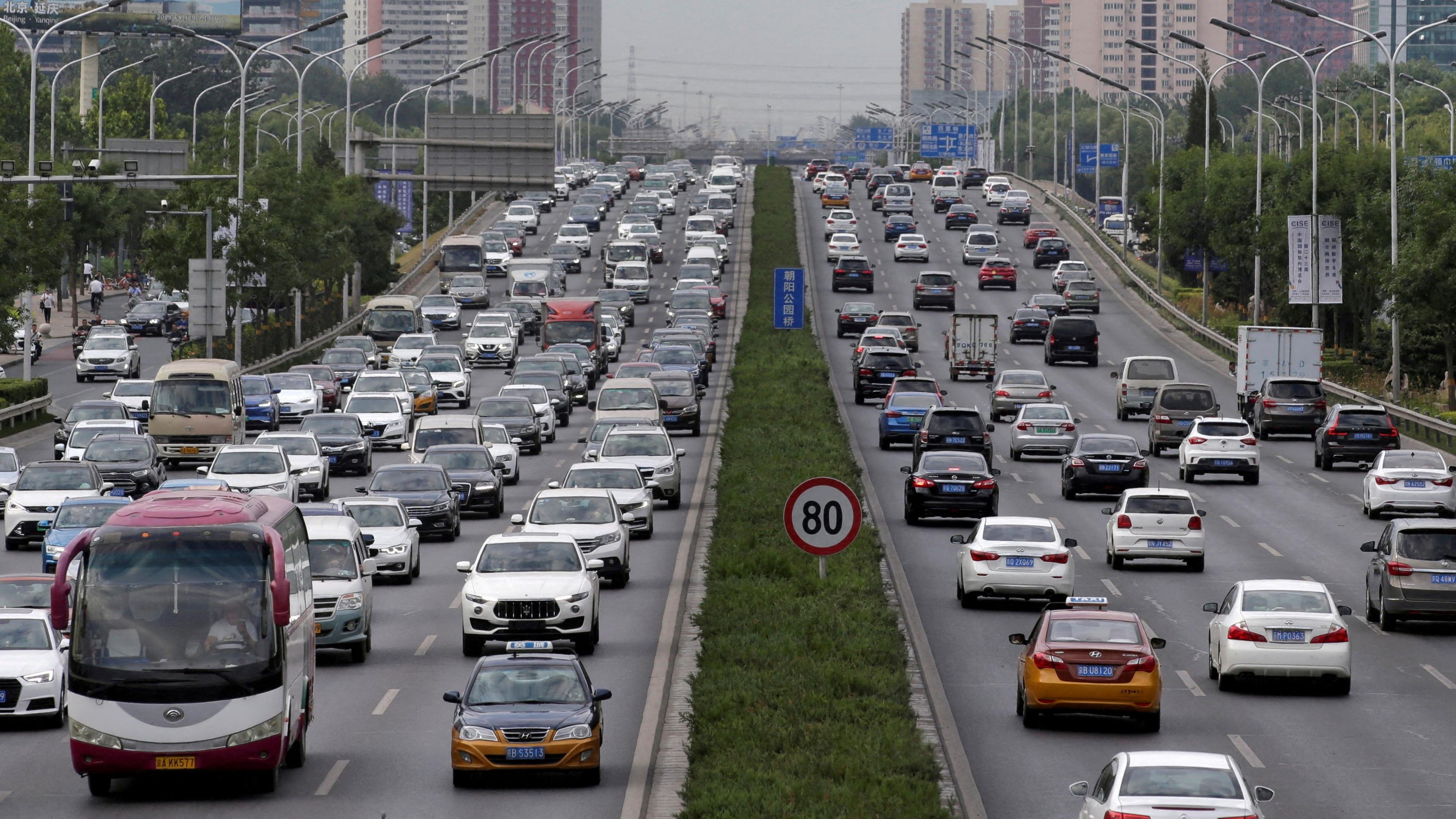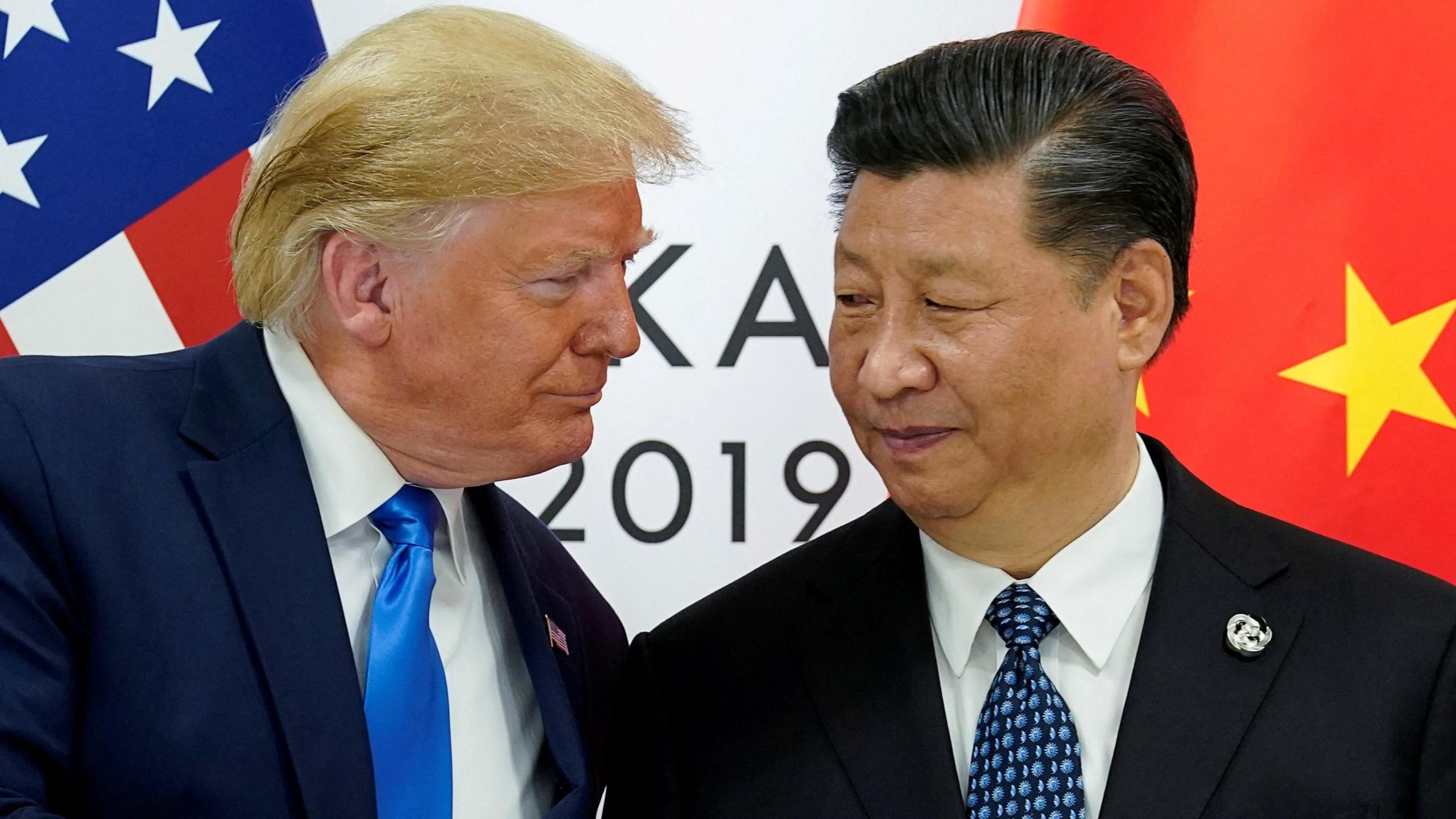Beijing hits back – can China and US avoid trade war escalation?
Watch: ‘Both sides suffer’ - Shanghai residents on US-China tariff tensions
- Published
Beijing has made its decision. After days of warning of counter measures and urging Washington to enter negotiations and "meet China halfway", it has decided to hit back – or at least threaten to retaliate with its own tariffs.
China said it would implement a 15% tariff on coal and liquefied natural gas products as well as a 10% tariff on crude oil, agricultural machinery and large-engine cars imported from the US from 10 February.
The date is important. It means there is still time for the world's two largest economies to step back from the brink of a trade war.
The two leaders have scheduled a call later this week, according to the White House, and there are signs, despite today's announcement, that China is in listening mode and is keeping the door open for talks.
Firstly, China's counter measures are limited in scope compared to Donald Trump's levy of 10% on all Chinese goods heading to the US.
America is the biggest exporter of liquid natural gas across the world, but China accounts for only around 2.3% of those exports and its major car imports are from Europe and Japan.
This calculated and selective targeting of goods may just be an opening shot by Beijing, a way of gaining some bargaining power and leverage ahead of any talks.
Officials in China may be encouraged by the cordial start to the US-China relationship since Trump took office.
The US president said he had a "very good" phone call with President Xi days before his inaugural ceremony, which was attended by the highest-level Chinese official ever to be dispatched to such an event. He has also suggested that he hopes to work with Xi on resolving Russia's war in Ukraine.
President Xi might not want to pick a fight with Trump just yet as he is busy trying to shore up his own ailing economy.
This is also familiar territory for both leaders – although they might not be keen to relive the past. There was a honeymoon period in US-China relations during Trump's last term, before the relationship soured.

Large-engine cars are among the US imports that Beijing has said it will tax
To deal or not to deal
It will also be far more difficult for Trump to do a deal with China than with Mexico and Canada - and much will depend on what he wants from Beijing.
China is Washington's chief economic rival and cutting the country off from major supply chains has been a goal of the Trump administration.
If Trump asks for too much, Xi might feel he can walk away and there will be limits on just how far he is willing to be pushed.
The US president is dealing with a far more confident China than he did back then. Beijing has expanded its global footprint, and it is now the lead trade partner for more than 120 countries.
Over the past two decades, it has also steadily tried to reduce the importance of trade to its economy and ramped up domestic production. Today, imports and exports account for around 37% of China's GDP, compared with more than 60% in the early 2000s, according to the Council on Foreign Relations.
The 10% tariff will sting, but Beijing may feel it can absorb the blow – for now.
The fear will be that President Trump is serious about ramping up that percentage to the 60% he pledged during his campaign or that he will continue to use the threat of tariffs as a recurring diplomatic tool to hold over Xi's head.
If that happens, Beijing will want to be ready and that means having a clear strategy in case this escalates.
Learning from the past
The last time the leaders signed a deal it did not end well.
The two countries issued tit-for-tat tariffs on hundreds of billions of dollars' worth of goods from 2018.
It lasted more than two years until eventually China agreed to spend an extra $200bn (£161bn) a year on US goods in 2020.
Washington hoped the deal would bring down the huge trade deficit between China and the US, but the plan was derailed by the Covid pandemic and that deficit now sits at $361bn, according to Chinese customs data.
There are also key challenges for China as it is thinking several steps ahead in any negotiation.
Beijing still sells nearly four times more goods to the United States than it buys - and during Trump's first term in office, it ran out of items to target.
Analysts believe that China is now looking at a wider range of measures than just tariffs to retaliate if the trade war ramps up.
The clock is ticking. This is not a full trade war, yet. Businesses around the world will be watching to see if the two leaders can reach some kind of settlement later this week.
Related topics
- Published4 February

- Published2 February
